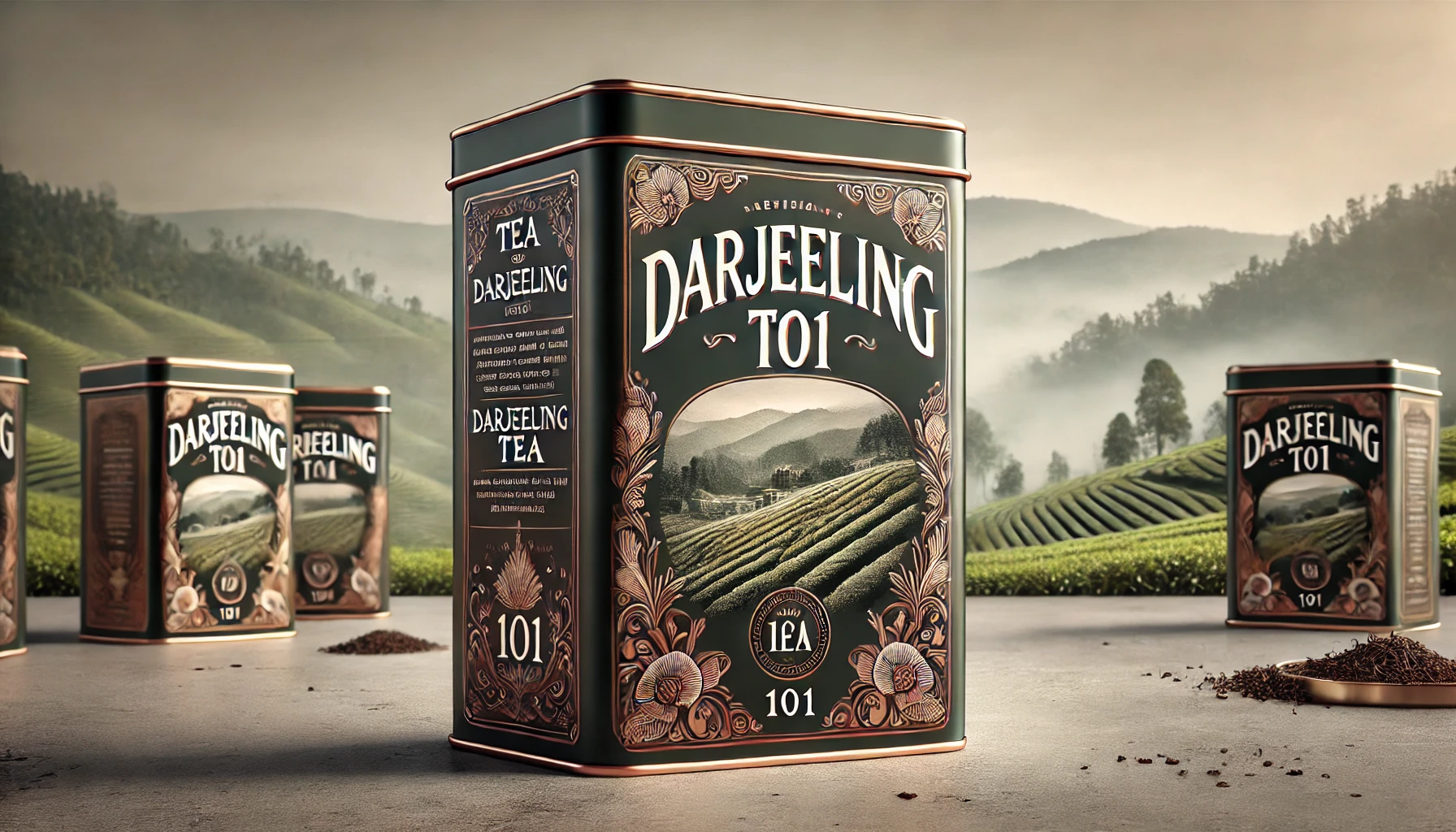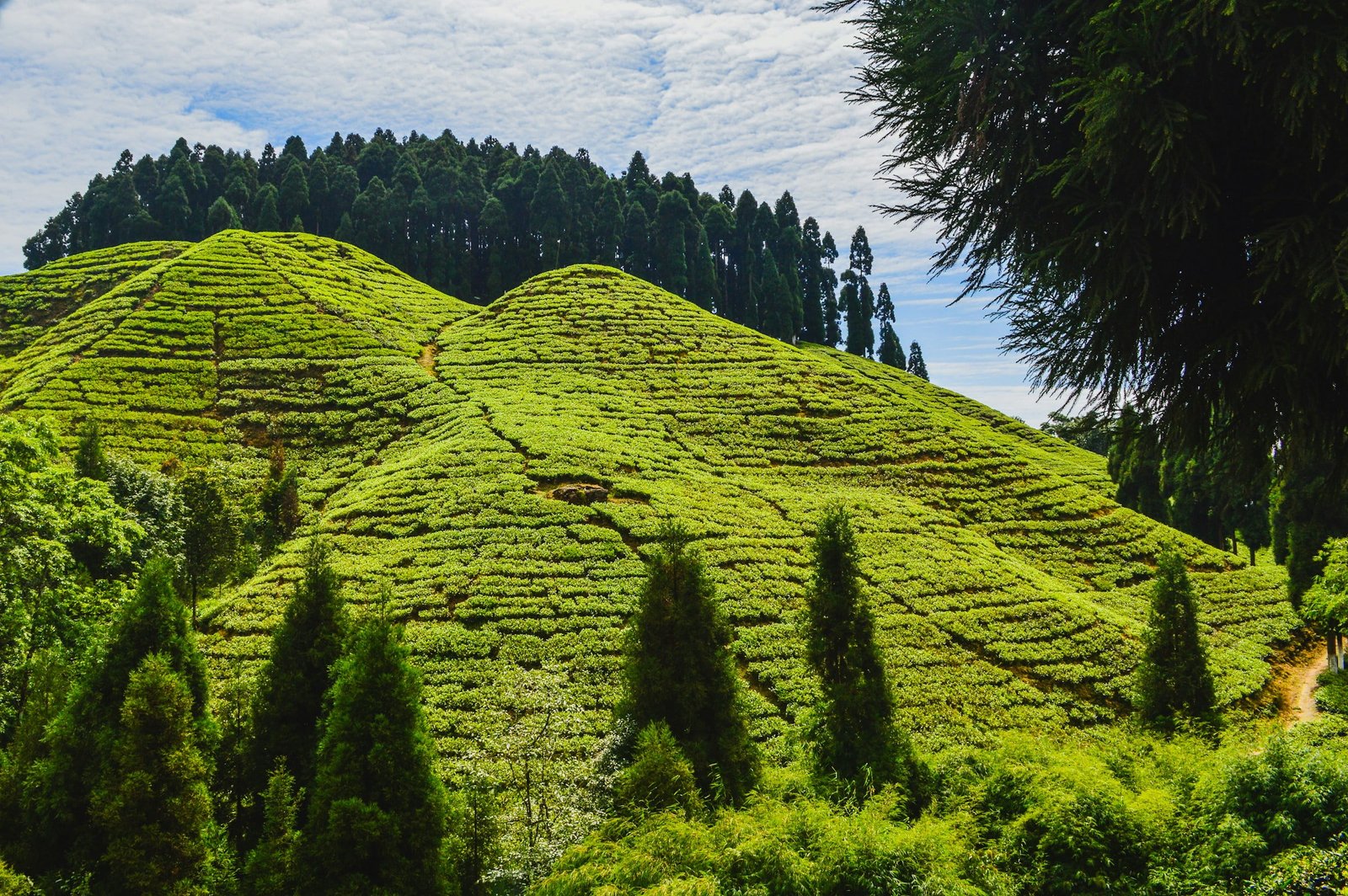Darjeeling tea is a world unto itself, rich in variety and steeped in history. It’s known for its unique flavors, aromas, and the special care taken in its production. But with so many options and terms to navigate, it can be daunting for someone new to Darjeeling tea. This guide will help you understand what makes Darjeeling tea special, how to choose the right one for you, and where to buy it.
Understanding Darjeeling Tea
Darjeeling tea isn’t just one type of tea—it’s a collection of teas from nearly 90 different Tea Estates, each offering something unique. These teas range widely in price and flavor, from light and floral to rich and complex. The teas are grown on steep mountain slopes in the Darjeeling region of India, in an area that’s just 70 square miles—about a quarter the size of New York City.
What Makes Darjeeling Tea Unique?
Darjeeling tea is often referred to as the “Champagne of Teas,” and for good reason. The combination of the region’s climate, altitude, and soil gives Darjeeling tea a distinctive character that can’t be replicated anywhere else. The tea is known for its delicate flavors, often described as floral, fruity, and slightly sweet, with a range of subtle aromas and nuances.
One of the key things that sets Darjeeling tea apart from other black teas is that it’s only partially oxidized. Oxidation is the process that turns tea leaves from green to black, and because Darjeeling tea undergoes less oxidation, it retains some characteristics of green and oolong teas. This gives Darjeeling tea a lighter body and more complex flavors than fully oxidized black teas like Assam or Ceylon.
Getting Started: How to Explore Darjeeling Tea
1. Don’t Compare Darjeeling to Other Black Teas
If you’re new to Darjeeling tea, the first thing to know is that it’s unlike other black teas you might be familiar with. While many people associate black tea with strong, bold flavors, Darjeeling tea is lighter, more aromatic, and closer in style to oolong tea. When you start exploring Darjeeling tea, focus on appreciating its unique qualities rather than comparing it to other black teas.
2. Start with the Two Main Styles: First Flush and Second Flush
Darjeeling tea is harvested in several “flushes” or seasons throughout the year, but the two most important are the first flush and the second flush.
- First Flush (Spring Harvest): This is the first harvest of the year, usually taking place from late February to mid-April. First flush Darjeeling teas are light, bright, and slightly astringent, with fragrant floral aromas. They are often considered the most delicate and prized of the Darjeeling teas.
- Second Flush (Summer Harvest): The second flush occurs from May to June and produces teas that are fuller-bodied with a richer, more complex flavor. These teas are famous for their “muscatel” flavor—a sweet, fruity, and slightly spicy note that is highly sought after.
Exploring these two styles is a great way to start your journey with Darjeeling tea. Both have their own distinct characteristics, so try both to see which one you prefer.
3. Don’t Think of Darjeeling as a Single Tea
Darjeeling tea is not just one tea; it’s a collection of teas from over 90 Tea Estates, each with its own unique flavor profile. There isn’t a single “best” Darjeeling tea, and the label “Darjeeling” itself doesn’t guarantee a specific quality or taste. To truly appreciate the diversity of Darjeeling tea, it’s best to sample a range of teas from different estates.
A good way to do this is by purchasing small sample packs, typically 10 grams each. These sample packs allow you to try a variety of teas without committing to a large amount. With these packs, you can explore the wide variety that Darjeeling has to offer without spending too much.
Key Indicators of Quality and Value
Understanding the basics of Darjeeling tea can help you make informed choices when buying it. Here are a few important factors to consider:
1. The Flush
The flush, or harvest season, is a key indicator of a tea’s flavor profile. When you see labels like “First Flush 2023” or “Autumn Flush,” they tell you a lot about the tea’s characteristics. Always check that the year and flush are mentioned, as this will give you an idea of the tea’s freshness and flavor.
- First Flush: Light and bright with floral aromas.
- Second Flush: Richer and fuller-bodied with muscatel notes.
- Autumn Flush: Lighter and more delicate, often described as muted versions of second flush teas.
If the flush isn’t mentioned, the tea is likely a blend of different harvests, which may not offer the same quality as a single flush tea.
2. The Grade of the Leaf
Darjeeling tea grades can be confusing, but they can also give you some insight into the quality of the tea. The highest grade is SFTGFOP (Super Fine Tippy Golden Flowery Orange Pekoe). This grade indicates that the tea is made from the youngest and most tender leaves, which generally produce the best flavor.
Lower grades include FOP (Flowery Orange Pekoe) and BOP (Broken Orange Pekoe), which use larger, older leaves or broken leaf fragments. These teas are often less delicate and flavorful than the higher grades.
3. Clonal Teas
Some Darjeeling teas are labeled as “Clonal” or “Cl.” This means the tea is made from cuttings of specific tea plants selected for their desirable traits, such as flavor, aroma, and resilience. Clonal teas are among the best of the newer Darjeeling teas and offer unique flavors that differ from traditional Darjeeling teas.
Where and How to Buy Darjeeling Tea
When it comes to buying Darjeeling tea, where you shop matters a lot. Here’s a simple guide:
1. Avoid Supermarket Darjeeling Teas
A key rule when buying Darjeeling tea is to avoid supermarket brands. These teas are often low-quality, made from the leftover dust and fannings that are too small and fragmented to be considered whole leaf. The economics of tea production mean that cheap Darjeeling teas are unlikely to be good.
2. Buy Online from Reputable Suppliers
The best way to buy Darjeeling tea is online, where you can find a wide range of options from reputable suppliers. Many of these suppliers offer vacuum-packed sample packs, which are a great way to try different teas without committing to a large purchase. Some of the best suppliers are based in India, Germany, and the UK, with the largest selection available online.
Specialty tea stores can also be a good option, but be cautious. Many of these stores get their teas from custom blenders, which may not always guarantee the highest quality. If you’re willing to pay a premium, look for stores that specialize in single-estate Darjeeling teas rather than blends.
The Challenges and Future of Darjeeling Tea
Darjeeling tea faces several challenges, including environmental issues like soil erosion, climate change, and the high cost of labor. These factors have led some tea experts to question whether Darjeeling tea is worth the price, especially when compared to other high-quality teas from China, Sri Lanka, and Nepal.
However, for many tea lovers, the unique flavors and aromas of Darjeeling tea make it worth the investment. While the future of Darjeeling tea is uncertain, it remains one of the most special and sought-after teas in the world.
Exploring Darjeeling tea is a journey that can lead to a lifelong appreciation for its unique qualities. Whether you’re sipping a light first flush or a rich second flush, Darjeeling tea offers a range of flavors and experiences that are truly one of a kind. If you love tea and are looking for something special, Darjeeling tea is definitely worth a try. And even if you find it’s not to your taste, there are plenty of other great teas out there to explore. But give Darjeeling a chance—you might just discover a new favorite.
Final Thoughts
Darjeeling tea is more than just a drink; it’s an experience. With its delicate flavors, rich history, and the care that goes into its production, Darjeeling tea offers something for everyone. This guide has provided you with the basics to start exploring Darjeeling tea, but the real adventure begins with your first sip. Whether you’re a seasoned tea drinker or a curious newcomer, Darjeeling tea has the potential to become a cherished part of your daily routine.


